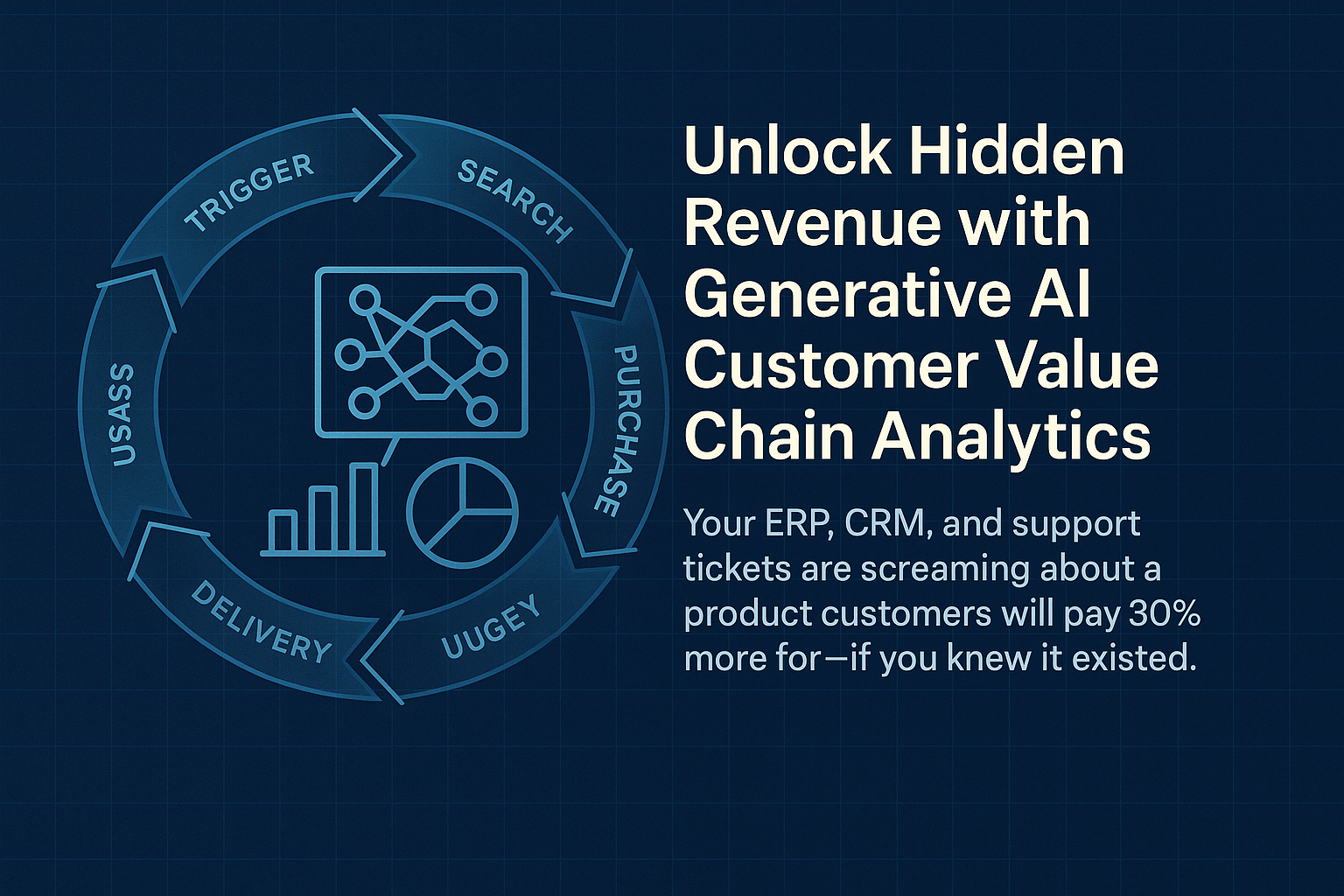In the rapidly evolving landscape of business technology, adopting and integrating artificial intelligence (AI) and automation are becoming crucial for maintaining a competitive advantage. For CEOs, understanding how to implement AI across the organization effectively is vital, especially when senior staff and teams express confusion or skepticism about integrating AI into existing systems. This article on AI Implementation for CEOs explores strategic approaches to guide organizations through successful AI adoption, ensuring senior staff are knowledgeable and proactive in leveraging AI technologies.
AI implementation for CEOs involves defining clear AI goals, developing an AI-literate leadership team, establishing a culture of continuous learning, and effectively communicating the benefits and changes AI brings to various organizational roles. CEOs must decide whether to implement AI themselves or hire experts to guide the process, ensuring seamless integration and maximizing AI’s potential.
Key Takeaways:
- Define Clear AI Goals: Align AI initiatives with business objectives to drive meaningful value.
- Develop an AI-Literate Leadership Team: Educate and train senior staff on AI technologies to support informed decision-making.
- Foster a Culture of Continuous Learning: Encourage innovation and adaptability through regular training and experimentation.
- Communicate Effectively: Keep stakeholders informed, address concerns, and highlight AI success stories.
- In-House vs. Hiring Experts: Evaluate the pros and cons of each approach to determine the best fit for your organization.
- Use this CEO Implementation Planning Guide
We will delve deeper into these strategic approaches, providing actionable insights and best practices for effective AI implementation. Continue reading to transform your organization with cutting-edge AI strategies tailored for CEOs.
Table of Contents
Defining Clear AI Goals for Organizational Success
CEOs must establish clear AI goals aligned with overall business objectives to successfully implement AI. This alignment ensures that AI initiatives drive meaningful value and support the company’s strategic direction.
Steps to Define and Communicate AI Goals:
– Assess Business Needs: Identify areas where AI can have the most significant impact, such as improving customer experience, optimizing operations, or driving innovation. Determine the specific problem you are trying to solve and ensure AI is the right solution.
– Set Specific Objectives: Outline measurable outcomes you aim to achieve with AI, such as reducing operational costs by a certain percentage or increasing customer satisfaction scores.
– Engage Stakeholders: Communicate these goals to senior staff and ensure everyone understands the potential benefits and changes AI will bring.
Example of Effective AI Goal Setting: A healthcare organization aiming to improve patient outcomes by implementing AI-driven predictive analytics to identify at-risk patients and personalize treatment plans. Using AI to analyze patient data and predict potential health issues, the organization can proactively manage patient care, reduce hospital readmissions, and enhance overall health outcomes. This clear and specific AI goal aligns with the organization’s mission to provide high-quality, patient-centered care while leveraging advanced technology to achieve measurable improvements.
Building an AI-Literate Leadership Team
For AI implementation to succeed, the leadership team must be knowledgeable and supportive of AI initiatives. An AI-literate leadership team can drive the adoption of AI technologies and help manage the cultural shift within the organization.
Strategies to Educate and Train Senior Staff on AI Technologies:
– Workshops and Training Programs: Conduct regular training sessions to familiarize senior staff with AI concepts, tools, and applications.
– Industry Conferences and Seminars: Encourage participation in AI-related events to stay updated on the latest trends and innovations.
– Collaborations with AI Experts: Partner with AI consultants or firms to provide hands-on training and insights.
Importance of AI Literacy Among Leadership:
An AI-literate leadership team can make informed decisions about AI investments, identify potential challenges, and champion AI initiatives across the organization.
Creating a Culture of Continuous Learning
Establishing a culture that embraces continuous learning is vital for successfully integrating AI. This culture encourages employees to stay curious, adaptable, and open to new technologies.
How to Foster a Culture That Embraces Innovation and AI:
– Implement Training Programs and Workshops: Regularly offer opportunities for employees to learn about AI and related technologies.
– Encourage Experimentation: Allow teams to experiment with AI projects and pilot programs without the fear of failure. Give everyone access to tools in the work environment.
– Promote Cross-Functional Collaboration: Facilitate collaboration between departments to share knowledge and best practices.
Example of Continuous Learning Initiatives:
A tech company hosts monthly AI innovation days, during which employees present their AI projects and ideas. Teams from various departments showcase their AI experiments and prototypes, discuss the challenges they face, and share the results of their initiatives. This fosters a culture of learning and innovation and encourages cross-functional collaboration as employees gain insights from different perspectives and disciplines. The company also invites external AI experts to provide feedback and offer new ideas, further enriching the learning experience and promoting a continuous improvement mindset.
AI Implementation for CEOs: In-House vs. Hiring Experts
One critical decision CEOs must make is whether to implement AI in-house or hire external experts. Each approach has advantages and challenges.
In-House AI Implementation:
- Pros: Greater control over AI projects, potential cost savings in the long run, and the development of internal expertise.
- Cons: Requires significant investment in training and infrastructure, and may face longer implementation times due to learning curves.
Hiring External AI Experts:
- Pros: Access to specialized knowledge and experience, faster implementation, and reduced risk of errors. External experts bring a wealth of experience working on diverse AI projects across various industries, which can significantly shorten the implementation timeline.
- Cons: Higher upfront costs and potential dependency on external providers.
Mitigating the Cons of Hiring External Experts:
- Manage Costs: Negotiate fixed-fee contracts or phased payment plans to manage the higher upfront costs of hiring experts.
- Knowledge Transfer: Ensure that part of the expert’s role includes training your internal team facilitating a knowledge transfer that builds internal expertise and reduces future dependency.
- Strategic Partnerships: Develop long-term strategic partnerships with AI consultants or firms. This approach fosters a collaborative environment where external experts become an extension of your team, aligned with your organizational goals and culture.
- Clear Communication: Maintain open lines of communication and set clear expectations to ensure that external experts are aligned with your company’s vision and objectives, reducing the risk of misalignment and dependency.
Communicating AI Benefits and Changes Effectively
Transparent communication about AI initiatives is essential for gaining buy-in from all stakeholders and managing the transition smoothly.
Strategies for Communicating the Benefits and Impact of AI:
– Regular Updates: Keep all stakeholders informed about AI project progress, challenges, and successes through regular meetings and reports.
– Highlight Success Stories: Share examples of how AI has positively impacted other organizations or departments within the company.
– Address Concerns: Proactively address any concerns or misconceptions about AI, emphasizing its role in augmenting human capabilities rather than replacing jobs.
Tips for Managing Change and Addressing Skepticism:
– Involve Employees Early: Engage employees in the AI implementation process to reduce resistance.
– Provide Support: Offer resources and support to help employees adapt to new AI-driven processes and tools.
Transform Your Organization with Strategic AI Implementation
The strategic implementation of AI across an organization is a complex but essential endeavor for modern businesses. CEOs can ensure successful AI adoption by defining clear AI goals, building an AI-literate leadership team, fostering a culture of continuous learning, and effectively communicating the benefits and changes AI brings. Whether choosing to implement AI in-house or with the help of external experts, the key is to approach AI integration thoughtfully and strategically.
Implementing AI can transform your organization, enhance operational efficiency, and drive innovation. By following these strategic approaches, CEOs can lead their companies to harness the full potential of AI technologies.
Ready to explore how AI can revolutionize your business? Reach out to us at Inkyma to schedule a strategy session and discover tailored solutions for implementing AI in your organization.
How long does it typically take to implement AI across an organization?
The timeline for AI implementation varies depending on the complexity of the AI projects and the organization’s readiness. On average, implementing AI can take a few months to a few years. Factors influencing the timeline include the scope of the AI initiatives, the existing technological infrastructure, the level of AI expertise within the organization, and the data availability. A phased approach, starting with pilot projects, can help manage the timeline effectively while demonstrating early successes to gain momentum.
What are the common challenges CEOs face when implementing AI, and how can they overcome them?
Common challenges in AI implementation include resistance to change, data quality issues, lack of AI expertise, and high costs. To overcome these challenges, CEOs should:
Promote a Culture of Innovation: Encourage an open-minded approach to new technologies and continuous learning.
Ensure Data Readiness: Invest in data management and quality improvement to provide a solid foundation for AI initiatives.
Build AI Expertise: Offer training programs and hire skilled professionals to bridge the knowledge gap.
Manage Costs: Start with smaller, high-impact projects to demonstrate value and secure further investment. By addressing these challenges proactively, CEOs can pave the way for successful AI integration.
How can AI be integrated into existing business processes without causing significant disruption?
To integrate AI into existing business processes smoothly, starting with a clear plan and pilot projects that can be scaled gradually is essential. Begin by identifying processes that will benefit the most from AI enhancements. Implement AI tools to complement current workflows rather than replace them abruptly. Engage employees in the transition by providing training and support to help them adapt to new tools. Regularly monitor the integration process and gather feedback to make necessary adjustments, ensuring a seamless transition with minimal disruption to operations.












